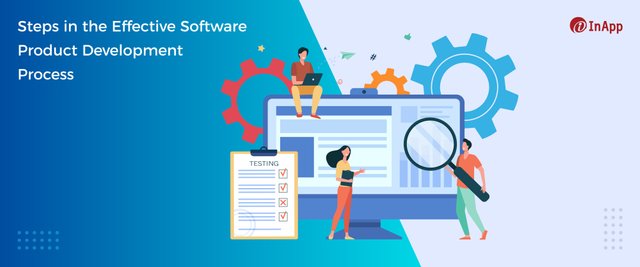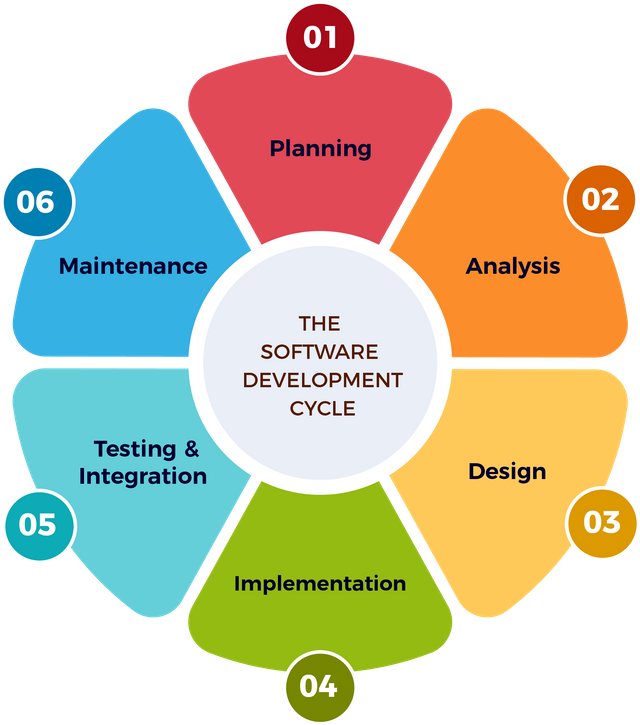Steps in the Effective Software Product Development Process
Software touches every aspect of our lives. But the software development process is complex, and projects can fail because they don’t consistently adhere to well-established processes. Following the right procedures is a must for delivering high-quality software products.
The software product development (https://inapp.com/product-engineering/) industry has witnessed rapid growth for some time. In fact, the custom software development segment was valued at $70 billion with a yearly growth rate of 5% in a late-2020 report, “Competitive Landscape: Custom Software Development Services” by Gartner (https://www.gartner.com/en/documents/3989290/competitive-landscape-custom-software-development-servic).
As a result, it’s critical for software product development companies to take systematic steps in order to deliver high-quality products. They must diligently follow all steps, from product architecture, design, and development to market launch and maintenance.
Before learning about the steps involved in effective software product development, let’s review what it is and the benefits.
What is the Software Product Development Process?
Software product development entails a step-by-step plan or a logical process targeted at building a software product tailored to meet the needs of an organization or individuals. It involves all the stages needed for the delivery of a product, including key stakeholders, objectives, goals, and project timeline.
Benefits of the Software Product Development Process
Following are some of the benefits of adhering to the software product development process…
Better communication among the members of the software development team
Better product quality
Easier to work in cross-functional teams
Improvement in the efficiency of the development process
Clear responsibilities
Better use of resources
Accurate estimates
Reduced risk
Transparency in process
Quicker identification and resolution of problems
Customer satisfaction
7 Steps for Effective Software Development
Let’s have a look at the most common steps needed for effective software development and the delivery of the perfect product.
Brainstorming and planning
Brainstorming is the first step in the software development process. A project starts with a great idea. But meticulous planning is at the core of its successful implementation. It entails working out the scope of the project; defining means and methods; and planning for resources availability, cost, and timeframe to meet business objectives. When you made a clear plan, you’re ready to move forward.
Requirements and feasibility analysis
Now it’s time to define the project in detail and analyze its feasibility. Your developers need a deeper understanding of the objectives and goals of the project. For that, you need to collect all the requirements.
In the feasibility analysis, you need to look at technical and economic aspects: resources, time, and task estimates from the members of your team. That’ll help you in calculating ROI and project profit and cost.
UI/UX and design
Here you create the detailed product architecture that can meet the requirements of the project. It’s one of the most important stages of the software product development cycle. You draft initial visual concepts for the product.
Development and coding
In this phase, you write code and convert all your UI/UX and other design documents into actual code as part of the software development process. This phase is the longest and is the backbone of the whole process. It’s the responsibility of developers to make sure that the code meets the specifications and conforms to the requirements of all stakeholders.
Integration and testing
Once the software is developed and ready, you need to integrate the parts and then test the product as a complete unit. Your testing team will conduct a variety of tests such as functionality testing, user acceptance testing, system integration testing, etc., to make sure the code is bug-free and meets the business objectives. To learn about testing solutions at InApp, visit our site (https://inapp.com/).
Implementation and deployment
Now it’s time to install the solution. You do it step by step according to the implementation plan. The application is moved to production. You may release it all at once or in stages depending on the complexity of the project. The product is ready for users to try out and see how it works.
Maintenance
This is the final stage of the software product development life cycle. You do regular maintenance and updates on the software. During this stage, you polish, upgrade and fine-tune the product after receiving real-world feedback from the end-users on its performance. You’ll have the opportunity to boost the functionalities and modify the capabilities per the user requirements.
Conclusion
As software product development is a complex process, you’ll need to approach it in an organized way by following all the steps in a cohesive plan. We highly recommend that you also follow product development methodologies. To learn more about agile methodology, please listen to the InApp podcast (https://inapp.com/podcast/).
If you have any questions related to the software product development process, contact us (https://inapp.com/contact/).

